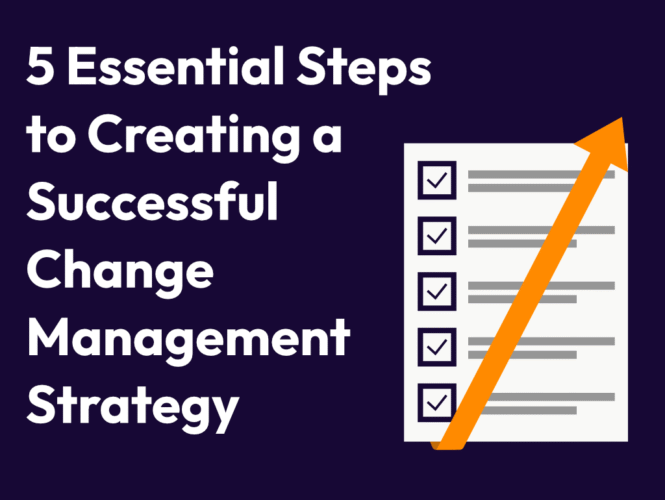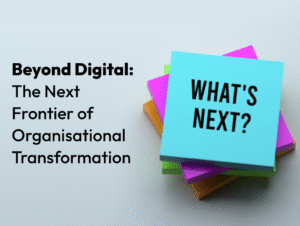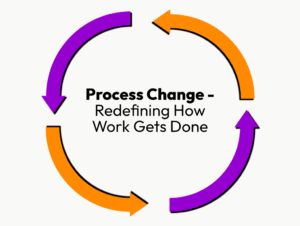Change is a constant in today’s world of business, but did you know that on average 70% of change initiatives fail? To ensure a smooth and successful transition organisations must have a structured approach. Below are five essential steps for effective change implementation.
Step 1: Define the Need and Vision
The first step in successfully implementing change is to clearly articulate why change is necessary and how it aligns with the organisation’s goals. It is helpful to identify the key drivers of change; for example, market demands, technological advancements, or operational inefficiencies. Clearly outline the expected benefits, risks, and overall impact on the organisation to create a strong foundation for the change initiative. A compelling definition of needs and vision will provide direction and help gain stakeholder buy-in.
Step 2: Engage Stakeholders and Communicate Transparently
It is proven that by placing people at the centre change, change is embraced and not resisted. It is key to involve employees and key stakeholders early to gather input and address concerns. Resistance often stems from fear of the unknown, so transparent and consistent communication is critical.
Develop a structured communication plan that includes:
- Clear messaging about the reasons for change and its benefits.
- Multiple communication channels such as meetings, emails, and Townhalls.
- Regular updates on progress and addressing employee concerns.
- A feedback mechanism to encourage participation and adaptability. Engaging employees in decision-making fosters a sense of ownership and increases the likelihood of successful implementation.
Step 3: Provide Training and Resources
To facilitate a lasting change, equip employees with the necessary skills and knowledge. This can be achieved through structured training programs, hands-on workshops, and access to support systems. Change often involves new processes, technologies, or ways of working but proper preparation will reduce uncertainty and frustration. Here are some steps to ensure adequate support is provided:
- Identify specific training needs for different roles.
- Provide user-friendly learning resources and quick cards.
- Offer coaching or mentoring programs for personalised guidance.
- Create an internal help desk or support team to assist employees. When employees feel confident in their abilities to adapt, they are more likely to embrace change.
For examples of how we’ve implemented this in the past, look at our latest case studies to see how we use targeted strategies to provide employees and teams with the mindset, tools and capabilities to thrive in change.
Step 4: Implement in Phases and Monitor Progress
Rather than executing the change all at once, break it into manageable stages to minimise disruption. Testing solutions in pilot groups before full-scale implementation allows for adjustments based on real-world feedback. Key actions in this phase include:
- Setting milestones and tracking progress with performance metrics.
- Identifying challenges early and modifying strategies as needed.
- Encouraging feedback from employees and making necessary improvements.
- Ensuring leadership actively participates and supports employees throughout the transition.
A phased approach reduces resistance and allows for continuous improvement, ensuring smoother adoption of the changes.
Step 5: Reinforce and Sustain the Change
Change doesn’t end with implementation; it must be reinforced to become part of the organisational culture. To ensure long-term success:
- Recognise and celebrate early successes to maintain morale.
- Integrate new processes into standard operating procedures.
- Continuously reinforce new behaviours through leadership support and ongoing communication.
- Conduct post-implementation reviews to analyse effectiveness and make refinements.
- Encourage adaptability and a mindset of continuous improvement. Sustaining change requires an ongoing effort to embed new ways of working into the company’s DNA.
Final Thoughts
By following these five essential steps—defining the need, engaging stakeholders, providing training, implementing in phases, and reinforcing the change—organisations can navigate transitions smoothly and achieve lasting success. A well-structured approach not only minimises resistance but also fosters an agile and resilient organisation that thrives in an evolving business landscape.





